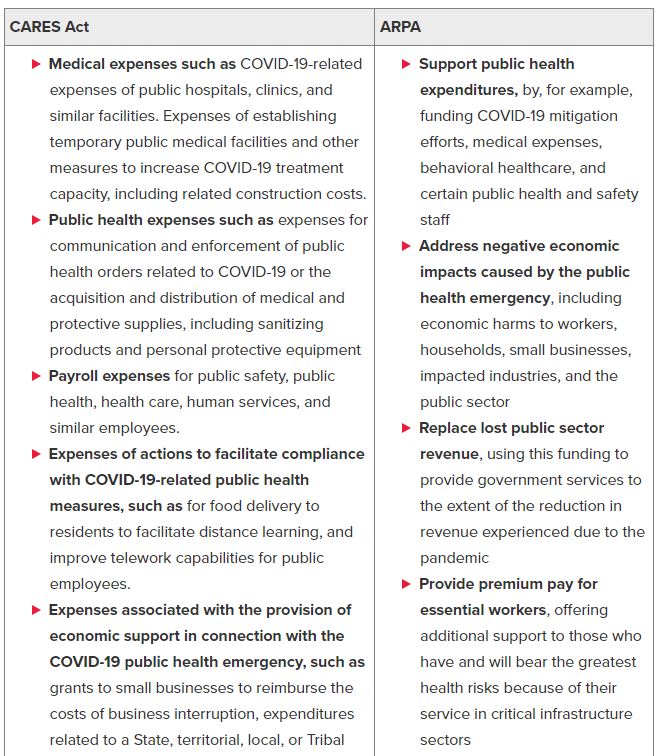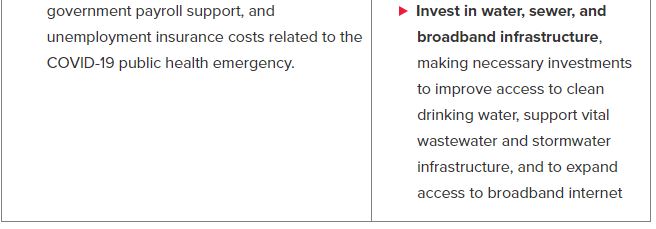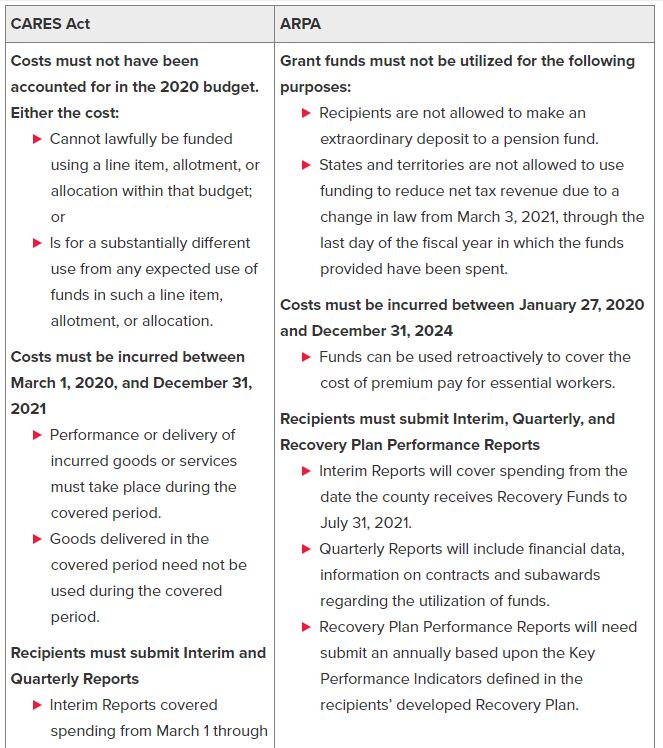 The U.S. Department of the Treasury has made available $350 Billion to state and local governments to cover the costs incurred as a result of recovery efforts related to the COVID-19 pandemic.
The U.S. Department of the Treasury has made available $350 Billion to state and local governments to cover the costs incurred as a result of recovery efforts related to the COVID-19 pandemic.
With the enactment of the Coronavirus State Fiscal Recovery Fund and the Coronavirus Local Fiscal Recovery Fund (Coronavirus Recovery Fund) established under the American Rescue Plan Act (ARPA) on May 10, 2021, the U.S. Department of the Treasury has made available $350 Billion to state and local governments to cover the costs incurred as a result of recovery efforts related to the COVID-19 pandemic. The initial dispersal of these funds will begin in July 2021, with the second dispersal of an equal amount takes place in mid-2022. This follows the distribution of $150 Billion to state and local governments through the Coronavirus Relief Fund (CRF) as established under the Coronavirus Aid, Relief, and Economic Security Act (CARES Act), which took place throughout 2020 and early 2021.
Although these two funding streams are similar in their aim of enabling state, territorial, tribal, county, metropolitan city, and other local governments to assist their communities as they recover from the pandemic, the types of eligible costs and applicability of the two funds are quite different. It is important for civic leaders to understand the difference between the two funding streams to ensure that their communities are able to make the best use of the grant allocations.
CARES Act funding is eligible to be utilized for necessary expenditures incurred due to the public health emergency. The eligible expenditures include those costs incurred:
- In direct response to the emergency, such as by addressing medical or public health needs
- To respond to second-order effects of the emergency, such as by providing economic support to those suffering from employment or business interruptions due to COVID-19-related business closures.
ARP Act funding is eligible to be utilized to meet pandemic response needs and rebuild a stronger and more equitable economy as the country recovers. The eligible expenditures include those costs incurred:
- To provide support for households, small businesses, impacted industries, essential workers, and the communities hardest hit by the crisis.
- To make necessary investments in water, sewer, and broadband infrastructure.


It should be noted that those ongoing expenditures claimed under the CARES Act, which is now also eligible under ARPA, can continue to be considered for reimbursement and funding. However, it should be noted that there are three major exceptions to this rule: ARPA places additional restrictions on payroll costs for public health and safety employees, does not allow expenses related to issuing tax-anticipation notes, and are not eligible to be utilized for non-federal matching requirements such as FEMA Disaster Assistance or Medicaid.
In addition to the differentiation in expenditure eligibility, there are some variations in the cost accounting and performance period between CARES and ARPA funds.


To comply with federal requirements, recipients of CARES and ARP funds may need to change their internal control structure, which can be a complex endeavor. From adhering to Uniform Guidance to following the "Internal Control Integrated Framework" issued by the Committee of Sponsoring Organizations of the Treadway Commission (COSO), creating, implementing, and documenting an internal control system for grants requires a considerable amount of time and manpower.
For more information about the above article or other business advisory services, contact Marty Williams, CPA, at (334) 887-7022 or by leaving us a message below.
By Corey Eide and Laurance Alvarado
This article originally appeared in BDO USA, LLP's Insights/Advisory/Risk Advisory - June 2021. Copywrite 2021 BDO USA, LLP. All rights reserved. www.bdo.com.







